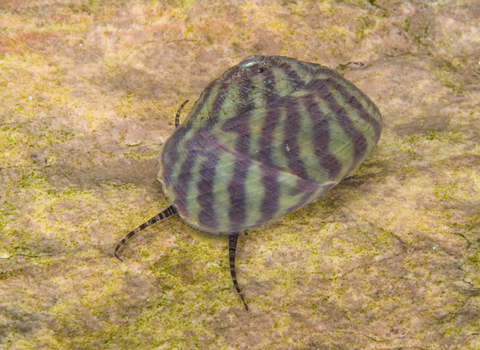
Purple topshell by Paul Naylor
Purple topshell
Also known as the flat topshell, these are one of the most common and colourful sea snails you are likely to see when out on a rockpool safari!
Scientific name
Steromphala umbilicalisWhen to see
January to DecemberSpecies information
Category
Statistics
1.6cm high, 2.2.cm acrossCommon
